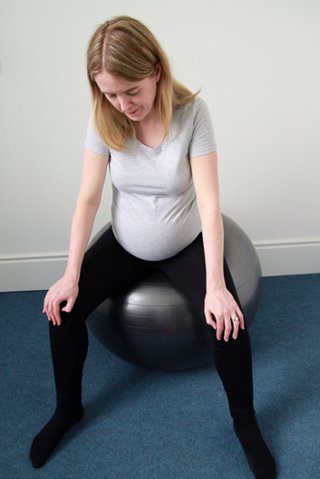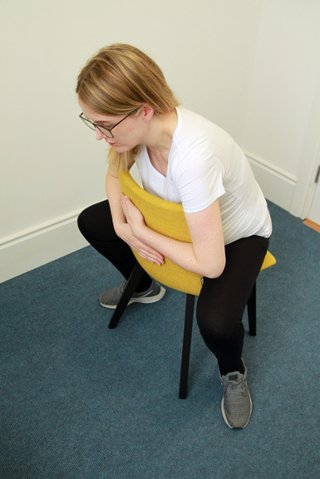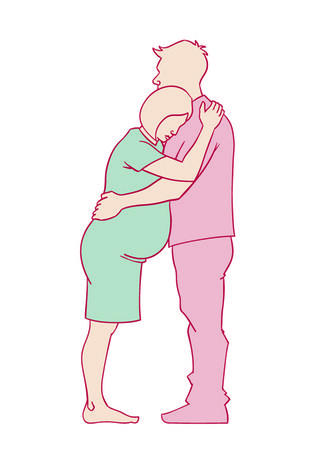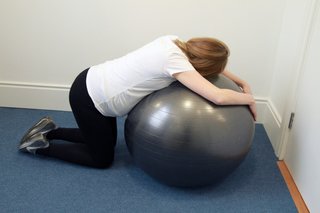Being active during labour can distract you from any discomfort you may be feeling. It can also shorten the time you're in labour.
You may feel the urge to stay upright and to move around. Listen to your body.
Being upright means using any position that avoids lying flat.
Benefits of staying upright during labour
Gravity will help your baby move down the birth passage. Pregnant women who are upright and active need less pain relief or interventions to get the baby out. Your baby will get a better oxygen supply and will be in a better position when you are upright.
Better contractions and less pain
When you are upright, your womb tilts forward during contractions. This means you will have better contractions and less pain. Contractions are stronger and more effective when you are upright. This could mean your labour is shorter.
Wider birth canal
The lower part of your spine can move better when you are upright. This means the birth canal can widen and make room for the baby’s head. Pelvic joints can expand and move which means less pressure on nerves.
Walking in early labour
Walking in labour may help to shorten the early phase of labour. When labour is more established, you might need support to change positions between contractions.
Labour hopscotch - preparing your body for labour
Ways to stay upright during labour
Staying upright includes:
- standing
- sitting backwards on a chair and leaning over a pillow on the top
- sitting on a birthing ball
- kneeling
- squatting
- being on all fours
- the 'slow dance' position
Breathing and self-help techniques for labour
Positions for first stage of labour
Try the following positions:
Sitting on a birthing ball
Positions for first stage of labour
Sitting on a birthing ball

Sit on a birthing ball (gym ball). Make sure you are comfortable. Move your pelvis in circles or gently rock forwards and backwards. This helps gravity bring your baby further down your body.
Sitting backwards on a chair

Sit facing the back of the chair, leaning forwards. Use a pillow for comfort if you like. You could sit in this position and watch a film during the early stages of labour. Your birthing partner could massage your back during contractions.
Resting on a birthing ball

Put your birthing ball on a table or height and rest against it while standing. You could also rest against a wall. This gives you time to meditate and relax between contractions. You will still benefit from an upright posture by using gravity to help with labour.
Birthing balls and other equipment for labour
The 'slow dance' position

Different positions using a birthing ball, mats and beanbags can help your baby move down the pelvis.
Positions for second stage of labour
Try the following positions:
Deep squat

Use a chair to help support you. This deep squat can help increase the diameter of your pelvis by 2 centimetres. This can help create room in your pelvis as your baby is being delivered.
Sitting with your back supported against a wall

Sitting with your back supported can help gravity with the birth of your baby. The bed on the delivery ward can be adjusted to support you in this way. This can be especially helpful if you have had an epidural, as you will have less options to change positions at this stage.
Lying forward on a birthing ball

Lying forward on a birthing ball can help to ease the pressure in your back during contractions. It is also a very natural position to deliver your baby in.
When you cannot be upright
You may not be able to stay upright if you:
- had an epidural
- have a drip
- are connected to electronic monitors
To stay comfortable, ask your birth partner and midwife to help you change position.